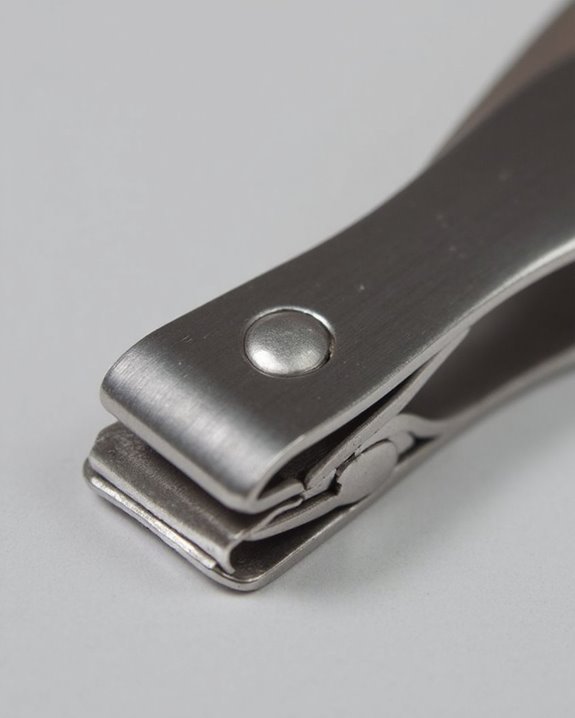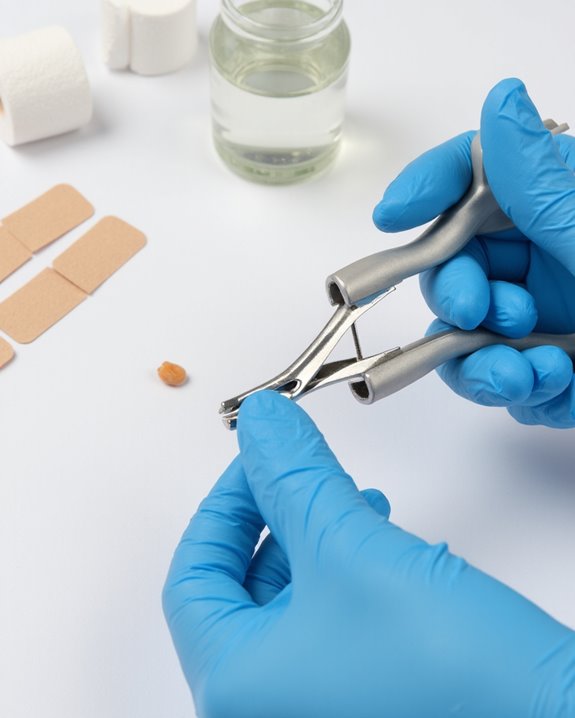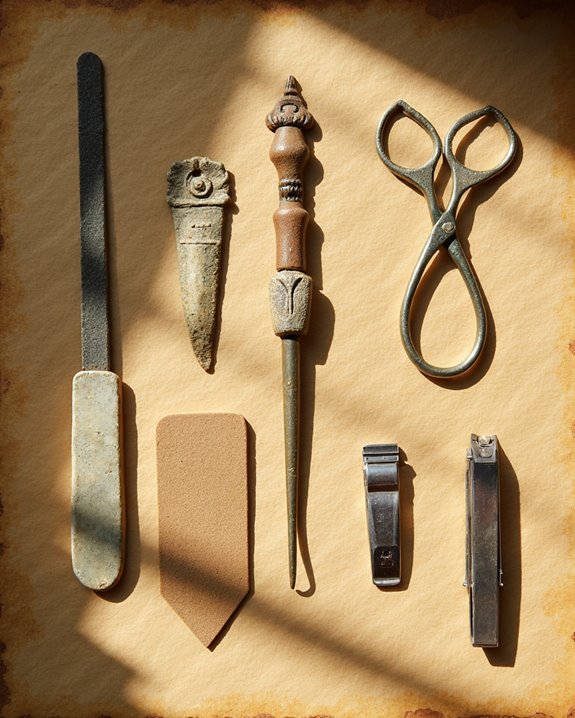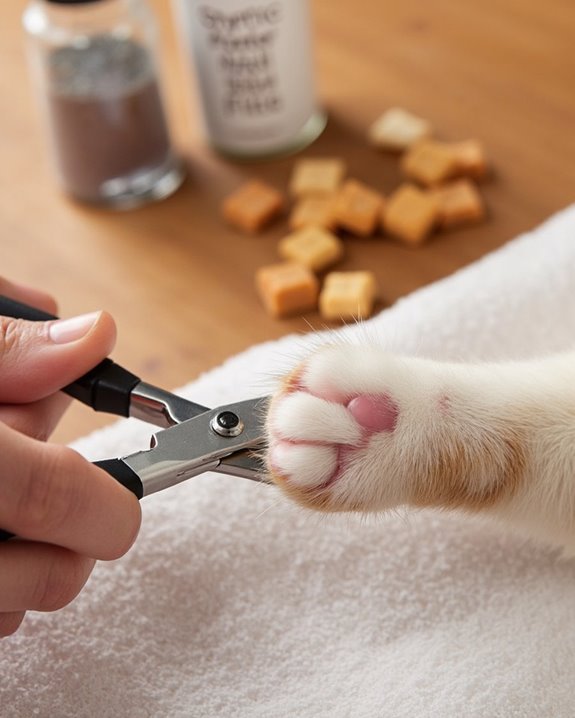The small hole on nail clippers serves a practical purpose: it’s designed for attachment to keychains, lanyards, or hooks. I’ve found this feature prevents loss of this essential grooming tool while keeping it readily accessible. The hole dates back to the late 19th century when designers recognized people needed portable grooming tools. You can also use it for improved leverage when clipping tough nails or for hanging storage. These clever design elements reveal the thoughtful engineering behind everyday items.
Key Takeaways
- The small hole in nail clippers was designed for attachment to keychains or lanyards to prevent loss.
- The hole provides leverage when a finger is slipped through, offering better grip and stability during use.
- Threading a string through the hole allows clippers to be hung on bathroom hooks for convenient storage.
- The design originated in the late 19th century and has become standardized for compatibility with key rings.
- Multiple nail clippers can be organized on a single keyring through their holes for family or travel use.
The Mystery Behind the Small Round Hole
Have you ever wondered about that tiny, circular hole at the end of your nail clippers? I’ve found that many people overlook this seemingly insignificant feature, dismissing it as decorative or mysterious. In reality, this round hole serves a practical purpose dating back to the late 19th century when nail clippers were first designed.
The small round hole is strategically placed to allow attachment to keychains, lanyards, or hooks, preventing the common problem of misplaced clippers. When I’m traveling, I thread a key ring through this hole, keeping my clipper accessible and organized. Before standardized bathroom storage became common, this clever design element addressed portability needs, allowing people to hang clippers or connect them with other grooming tools, ensuring they remained ready for use.
Original Purpose and Design Intent
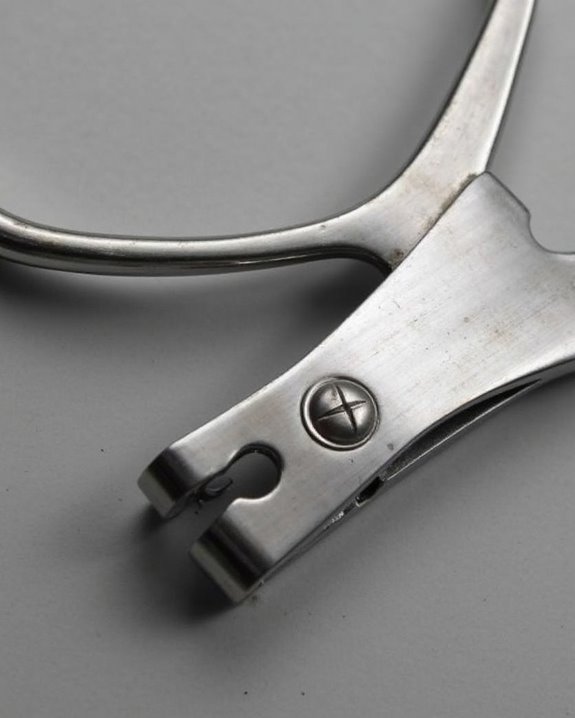
The tiny hole adorning the end of nail clippers originated during the late 19th century, when manufacturers first incorporated this practical element into their designs. This small hole served a straightforward purpose: allowing users to attach the clippers to keychains, lanyards, or other personal items during an era when household bathrooms weren’t common fixtures. I’ve found that this engineering choice addressed a specific consumer need for portability and organization of grooming tools.
Engineers designed this feature as a simple solution to prevent loss of these essential implements, ensuring they remained accessible when needed. The hole’s functionality demonstrates early innovations in everyday tool design, focusing on user convenience. This practical attachment point has persisted in modern nail clipper designs, maintaining its original purpose while becoming a standard feature we’ve come to expect in these common grooming tools.
Attaching Your Nail Clipper to Keychains and Lanyards
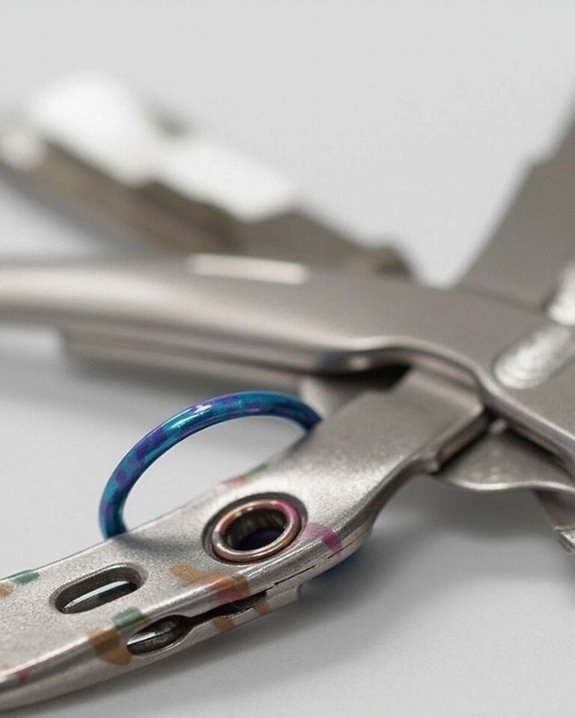
Securing your nail clipper to a keychain begins with threading a small key ring through the circular hole located at the end of the clipper, creating an instant attachment point for everyday carry. This hole is specifically designed for portability, allowing you to connect your clipper to keys, bags, or lanyards with minimal effort. I’ve found that this simple attachment method prevents the common frustration of misplacing your clipper when you need it most.
For travel purposes, I recommend ensuring the key ring is firmly secured through the hole before attaching it to your preferred carrying system. The convenience of having your nail clipper readily accessible can’t be overstated, particularly during trips when grooming needs arise unexpectedly. This practical use of the hole transforms a basic grooming tool into an organized, always-available necessity.
Practical Benefits of the Attachment Feature
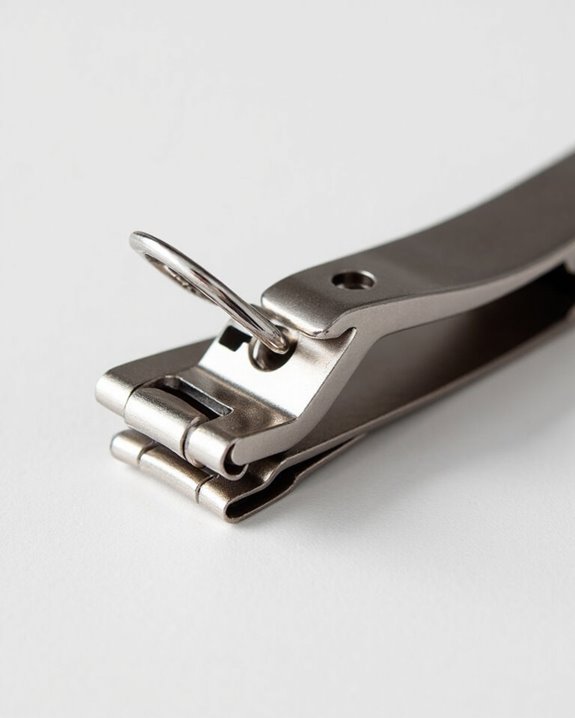
While most people overlook it, that tiny hole on your nail clipper delivers multiple practical advantages beyond simple attachment options. The hole allows users to thread the clipper onto a keychain or lanyard, greatly reducing the likelihood of misplacement during travel or daily routines. I’ve found this feature especially valuable for maintaining organization in bathroom drawers, as you can hang the clipper on a hook for immediate access when needed.
Additionally, this opening provides unexpected functional benefits during use. When you slip your finger through the hole while trimming, you’ll gain better leverage and stability, resulting in more precise cuts. For households with multiple clippers, connecting them with a single ring through each hole creates an efficient storage solution that keeps all your grooming tools together and accessible.
Creative Alternative Uses for the Nail Clipper Hole
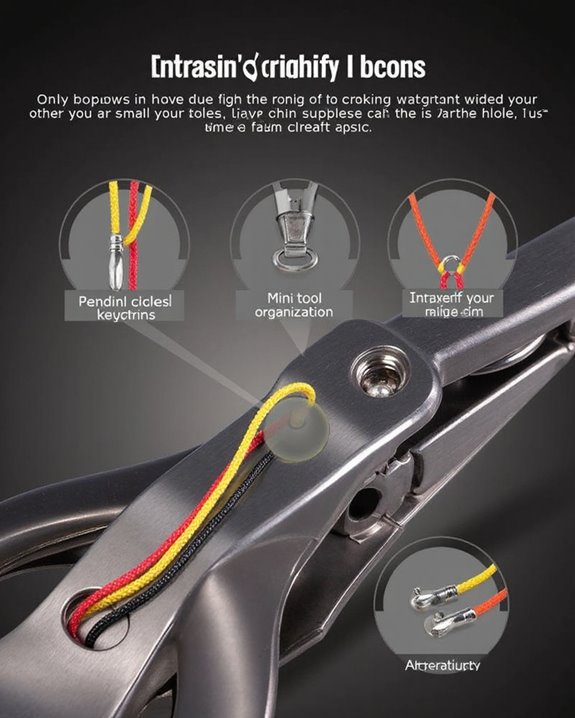
Beyond its obvious attachment function, have you ever considered how that unassuming hole in your nail clipper can serve multiple creative purposes? I’ve discovered several innovative applications that maximize this simple design feature.
You can thread a string through the hole to hang your clipper on a bathroom hook, keeping it accessible while saving drawer space. For enhanced stability when tackling tough toenails, try slipping your finger through the hole for improved leverage and control. Families might appreciate organizing multiple clippers on a single keyring, creating an efficient grooming station that keeps each person’s tool separate yet together.
Outdoor enthusiasts can attach clippers to a lanyard during hiking trips, preventing loss in rugged terrain. For uneven surfaces, try looping a rubber band through the hole at the end.
Evolution of Nail Clipper Design Throughout History
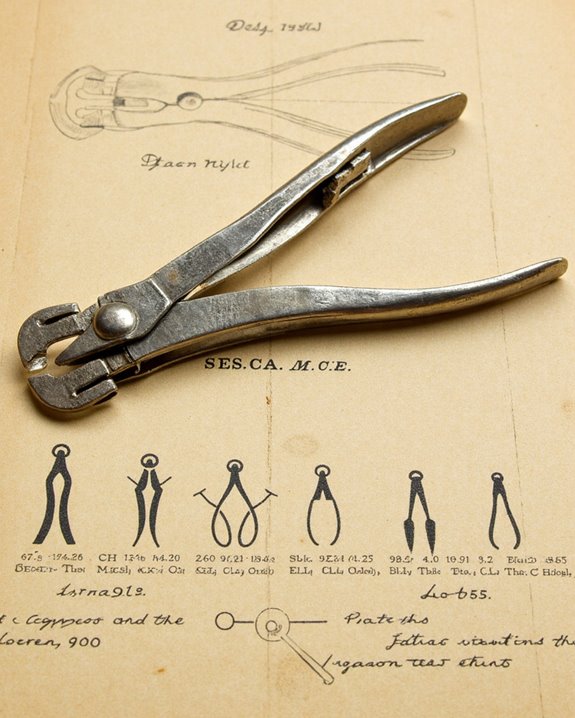
The nail clipper we use today, with its distinctive hole for attachment, represents the culmination of centuries of design evolution. Dating back to the late 19th century, early nail clippers featured this small hole primarily for practical purposes—allowing users to attach the tool to keychains, preventing loss during travel. As the 20th century progressed, nail clippers evolved from simple metal levers to more ergonomic designs, while maintaining the functional hole as a core feature. Manufacturers began using stainless steel, enhancing durability and rust resistance. By mid-century, precision engineering allowed for standardized hole sizes, improving compatibility with key rings and lanyards. Later advancements introduced multi-tool functionalities, such as built-in files, while preserving the hole for organizational convenience. This evolution reflects broader societal shifts from communal to private grooming spaces, emphasizing portability and accessibility, and the material quality of the clips significantly contributed to their longevity and functionality.
How Different Clipper Types Utilize the Hole Feature
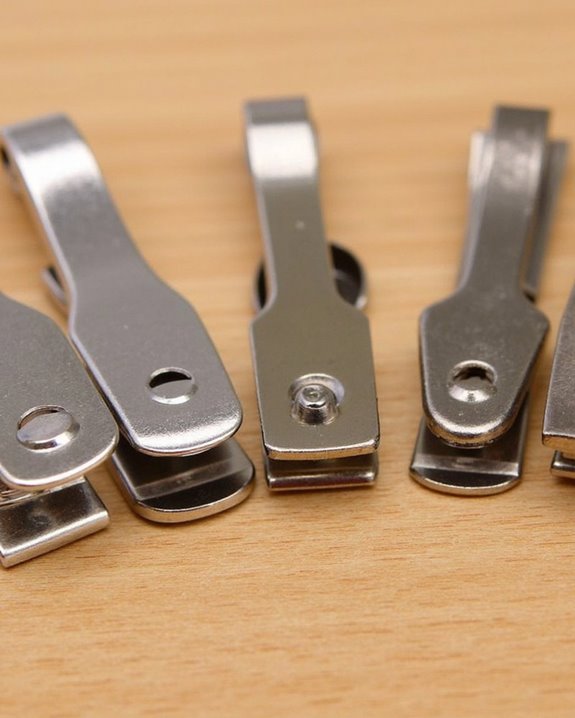
How exactly do various nail clippers incorporate that tiny, often overlooked hole on the nail clippers into their designs? Standard fingernail clippers feature this small aperture primarily for keychain attachment, preventing loss during daily activities. Toenail clippers, built for thicker nails, use the hole to secure onto tool belts or hooks, making them readily accessible in grooming kits. For pet owners, nail clippers with holes connect to other animal care tools on rings, creating organized storage systems. Parents appreciate baby nail clippers with holes that attach to keychains or diaper bags, reducing the chance of misplacement. Multi-tool versions integrate the hole into keychain systems, combining nail trimming with additional features like files. Each design variation optimizes the hole for specific carrying, storage, and accessibility requirements.
Frequently Asked Questions
What Is the Hook on a Nail File For?
I’ve always found the hook design on my nail file super practical. It lets me attach it to my keychain or hang it in my bathroom, keeping it handy whenever I need a quick nail fix.
What Is the Sharp Thing on Nail Clippers For?
I use the sharp edge on my nail clippers as a built-in nail file. It’s perfect for smoothing rough edges after clipping. I find it saves time not having to reach for a separate file.
What Is the Blade on Nail Clippers For?
I use the blade on my nail clippers to neatly trim both fingernails and toenails. It’s designed for precise cutting with minimal effort. Regular blade maintenance keeps it sharp and prevents bacteria buildup.
Can Nail Clippers Carry Fungus?
Yes, I’ve found that nail clippers pose a real Fungus Risk. They can harbor dermatophytes and other fungi for days, especially in humid conditions. I’d recommend disinfecting yours with 70% isopropyl alcohol after each use.

